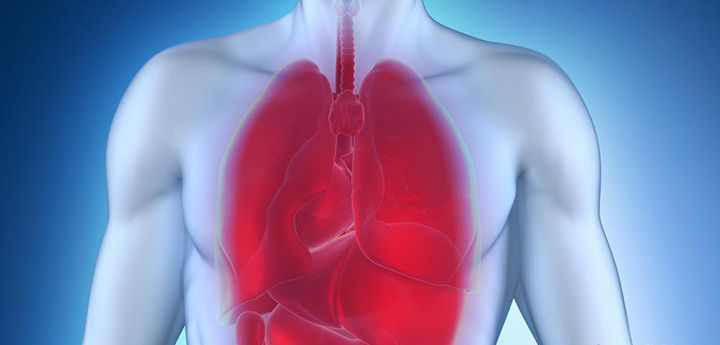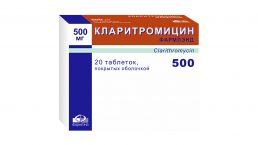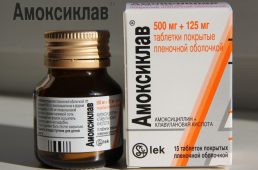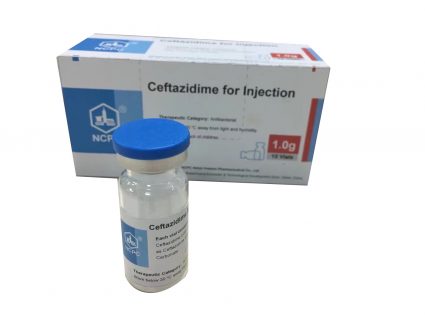Pneumonia often has a very unpleasant and severe course, leading to complications. Sometimes it develops imperceptibly, and is found only in the later stages. Some 70 years ago, this disease was incurable and ended in death, but today, thanks to antibiotic therapy, a successful treatment of this disease has become possible. In the article you will find a list of antibiotics for pneumonia and features of their treatment.
Material Content:
What is pneumonia?
Simply put, pneumonia is pneumonia. This term often means diseases of various origins, most often bacterial, that affect the lung tissue. They may affect a small part or the whole lung. Pathology can develop as an independent disease or occur against the background of another, can also occur both acutely and chronically.
 The danger of pneumonia is that it can lead to pulmonary edema, a condition where breathing is simply not possible, since the tissues are filled with liquid and gas exchange does not occur. Pathogens can be bacteria, viruses, fungi, or a combination thereof.
The danger of pneumonia is that it can lead to pulmonary edema, a condition where breathing is simply not possible, since the tissues are filled with liquid and gas exchange does not occur. Pathogens can be bacteria, viruses, fungi, or a combination thereof.
As a rule, the main symptoms are a sharp increase in temperature, a strong cough, in which sputum with an unpleasant odor of green or gray color abundantly leaves, chest pain.The body tries to cope on its own, even more expectorating the contents of the lungs, but only more spreads bacteria to healthy bronchi and alveoli.
The main diagnostic methods are x-ray examination of the organs of the chest cavity and analysis of sputum for pathogens that cause pneumonia, and their sensitivity to effective antibiotics, general and biochemical blood tests.
Predisposing factors in adults
The risk group for pneumonia includes:
- heavy smokers;
- persons suffering from chronic diseases of the lungs and bronchi;
- suffering from diseases of the cardiovascular system;
- after surgery on the chest cavity;
- persons with immunodeficiencies;
- those who suffer from alcoholism and drug addiction.
Treatments for pneumonia
This is a very dangerous and serious disease, so at the first sign you need to immediately contact a specialist. Pneumonia is treated in a hospital with a complex drug regimen. Since bacteria are mainly pathogens, it is precisely the treatment of pneumonia with antibiotics that will be of primary and central importance.
- macrolides;
- fluoroquinolones;
- penicillins;
- cephalosporins;
- carbapenems.
The choice of these drugs is due to their wide action, since initially, when sputum tests are not ready and the main pathogens have not yet been identified, it is necessary to cover the maximum possible number of microorganisms, and every hour of delay only worsens the prognosis of the disease and increases the chance of complications.
Another feature of antibiotic therapy for pneumonia is the treatment regimen. The basic principle is the constant maintenance of an effective concentration of the antibiotic in the blood. With the help of tablets, this is quite difficult to do, so the first days in the hospital, drugs are administered intramuscularly or intravenously, since this is how the dose received by the patient can be controlled.
Also, the complex of therapeutic measures includes the intake or inhalation of drugs that expand the bronchi and dilute sputum, taking corticosteroids, oxygen inhalation, physiotherapeutic treatment.
The main list of modern antibiotics prescribed for pneumonia
The purpose of antibiotics largely depends on the pathogen detected and on its sensitivity to certain antibiotics. But obtaining the results of such an extensive analysis is often possible only after 10 days.
Therefore, initially, while no one knows specific microorganisms, groups are appointed:
- Pennicillins: Amoxiclav, Augmentin.
- Cephalosporins: Ceftazidime, Cefotaxime, Cefuroxime, Ceftriaxone.
- Macrolides. Representatives are Azithromycin, Clarithromycin, Spiramycin, Midecamycin.
- Fluoroquinolones. Representatives: Moxifloxacin, Levofloxacin, Ciprofloxacin.
Moreover, not only one antibiotic is prescribed, but often a combination of the two, based on the person’s age, previous illnesses, allergic reactions, type and course of pneumonia. After the results of a sputum test, therapy is either corrected or supplemented.
Injection Release Form
All antibiotics that are intended for intravenous or intramuscular administration are available in powder form in a sterile glass container. Depending on what dose the patient requires, prepare a solution for injection or transfusion.
The attending physician calculates how much antibiotic is needed per dose, based on the person’s body weight, age, shape and severity of pneumonia. Then the right amount is diluted with water for injection or lidocaine and injected parenterally, that is, into muscle tissue. For a dropper, use a 0.9% solution of sodium chloride (saline), or a dextrose solution. The speed of administration and the frequency of the procedure is also determined by the doctor.
Pills
If the disease has passed and the patient is recovering, the final dose in the course of taking is allowed to take antibiotics in tablets. They can be in the form of film-coated tablets, in the form of capsules or soluble tablets. As a rule, the doctor calculates the dose and frequency of administration.
The main rule of self-administration of antibiotics is a reception at the same time at regular intervals. In antibiotic therapy, the main principle is to maintain a constant concentration of the drug in the blood. Therefore, the tablets are designed in such a way as to release the active substance gradually, providing the desired level in the body. That is, a break will violate this condition, which will negatively affect the results of treatment.
Medications for the treatment of pneumonia in adults
The choice of drug for the treatment of pneumonia depends on the age, form and course of the disease, concomitant pathologies, previous treatment, the presence of allergic reactions.
The so-called nosocomial pneumonia that occurs in severely ill patients lying in a hospital or intensive care unit, or as a complication of some other disease, is caused by more aggressive microorganisms, since the microflora in a medical institution is often resistant to many drugs.
Therefore, as a rule, a combination of drugs is prescribed:
- penicillins and cephalosporins - the most used combination;
- penicillins and aminoglycosides;
- penicillins and lincomycins;
- cephalosporins and lincomycins;
- cephalosporins and metronidazole.
It should be noted that the above combinations, with the exception of the very first, are used only in cases of severe course and poor prognosis, as well as for the treatment of debilitated patients. For the treatment of community-acquired pneumonia:
- penicillins;
- macrolides;
- fluoroquinolones;
- in severe and advanced cases - cephalosporins in combination with macrolides.
It is very important not to disrupt the regimen of drugs, not to cancel drugs on their own, not to replace them. Otherwise, pneumonia may return, but its treatment will take much more time, and the therapy will be more complicated, as existing organisms will have time to develop resistance, that is, they will become resistant to the means used earlier.
Features of the treatment of pneumonia in children
Among the predisposing factors for pneumonia in children are:
- birth injuries and intrauterine pathologies;
- disorders of the development of the cardiovascular system;
- violations of the development of the broncho-pulmonary system;
- immunodeficiencies, both congenital and acquired;
- chronic foci of upper respiratory tract infection;
- cystic fibrosis is a hereditary disease in which the glands of the respiratory and digestive systems are mainly affected.
Most often, treatment of pneumonia in children takes place in a hospital, as they may need oxygen inhalation at any time. Groups of children subject to immediate hospitalization:
- infants;
- babies under 5 years old with extensive lesion;
- children with brain pathology;
- children with defects and pathologies of the cardiovascular system, respiratory system, endocrine system, with kidney damage;
- children with cancer;
- kids from dysfunctional families, orphanages;
- children with a severe form of the disease;
- patients who have had impaired medication or non-compliance with recommendations;
Before finding out the exact causative agent, treatment begins with antibiotics of a group of natural and synthetic penicillins. Among the representatives distinguish:
- natural penicillins: Benzylpenicillin, phenoxymethylpenicillin;
- semi-synthetic: Oxacillin, Ampicillin, Amoxicillin, Carbenicillin, Ticarcillin, Azlocillin, Piperacillin.
After receiving tests for the sensitivity of bacteria to groups of drugs, the therapy is adjusted or supplemented, taking into account the child's age, weight, allergic reactions, and concomitant diseases.
Contraindications, side effects, overdose
It is worth remembering that the prescribed antibiotic therapy in each individual case is strictly individual, so that the drugs used will be different for all patients. In order to have an approximate idea of possible contraindications to medicines, side effects and possible overdoses, it is worth considering the most common combinations and agents.
The main contraindications to antibiotics are intolerance to the components and allergic reactions to the drug. Disorders of the liver and kidneys can serve as another reason for the careful use of drugs, since the main metabolism, that is, transformation, destruction and excretion, occurs in these organs.
Endocrine diseases, pathologies of the central nervous system may become a contraindication to the use of certain drugs, for example, benzylpennicillin. Some drugs can not be prescribed to children under a certain age and underweight.
Adverse reactions of drugs, as a rule, are not always associated with the active substance itself, but arise due to other components. So, for example, Amoxiclav contains clavulonic acid, which causes nausea, vomiting, diarrhea, and abdominal pain. Also, when taking medicines, allergic reactions may occur. It:
- skin rashes;
- itching
- burning;
- fever;
- toxic epidermal necrolysis (Lyell's syndrome);
- Stevens-Johnson syndrome;
- erythema multiforme exudative;
- Quincke's edema;
- bronchospasm;
- anaphylactic shock.
Unfortunately, it is often impossible to predict whether an allergy to a particular antibiotic will occur.
Symptoms of an overdose are also individual for each drug. These are mainly disorders associated with the gastrointestinal tract and nervous system. In such cases, the supervision of specialists is necessary, and medical care will be to maintain vital functions.
















